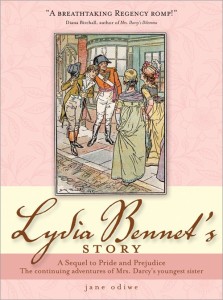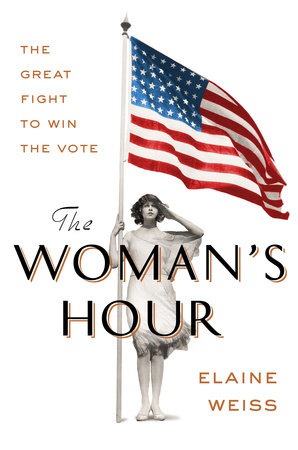
Reading a sequel or a “retelling” by another author of a book one greatly loves is always a mixed pleasure. One ought, first, to distinguish whether one wants to spend more time in Jane Austen’s world, among her characters, or whether one really wants another Jane Austen book. No modern author, no matter how big a fan or how adept a reader, has Austen’s sensibility, her eye for detail, her ability to characterize even the most absurd people with warmth and humor, and her genius for making the smallest complexities of the human heart so interesting.
That said, Odiwe has a particular challenge in choosing Lydia as the subject for her sequel. It’s hinted at the end of P&P that Mrs. Wickham doesn’t evolve much as a character; she’s always asking Lizzy or Jane for money, and she spends more time impinging on the hospitality of Netherfield than she should. Lydia is there to provide necessary tension, contrast between the good sense of Elizabeth and the sincere warmth of Jane, an amusing if sad portrait of a young girl who, in this world at least, doesn’t have her priorities straight, and is a terrible judge of character.
I admit I expected Odiwe to make some adjustments to Lydia’s character, in order to make her an interesting heroine. But she doesn’t, not really. In fact part one of the story simply retells events in the latter half of P&P including Lydia’s despair over the imminent departure of the officers from Meryton, her removal to Brighton at the invitation of Mrs. Forster, and her eventual elopement with and marriage to Wickham. Odiwe doesn’t strive to make Lydia’s character any more complex than that we see in Austen’s novel, and certainly doesn’t imbue her with hidden depths; Lydia is still a silly adolescent girl without the judgment to make sound choices, and is so swept away by a handsome face and passionate kisses that she throws her upbringing, her family, and her own future out the window and runs away with a cad. Wickham too does not reveal any hidden depths; perhaps we have been too much prejudiced by Lizzy’s knowledge, but he comes off as a cad from the start, and one wonders what Lydia even sees in him, no matter how handsome he is. I wondered at several points if there is now a YA Regency genre, and, if so, this is an example of it.
The action is amusing, but not terribly interesting; what’s most interesting about part one is the detailed research Odiwe has clearly done. In fact she might know more about Jane Austen’s Regency world than Austen, since that quiet author didn’t travel extensively, while Odiwe shows us, through Lydia’s eyes, the shops and hotels of Brighton, the military encampment, the practice of bathing at the sea-shore, and all of the various fripperies that a young Regency girl would want to buy. The detailed setting is the best part of the story, from my point of view, though it’s stronger in part one than in part two.
Part two, which opens with Lydia newly wed and newly ensconced in Newscaste, gives Odiwe the opportunity to truly make the story her own, since Austen never took us to Newcastle. But the story, from here, becomes even more predictable. Wickham, who in Austen’s novel is sly enough to look out for his best interests and make himself agreeable, degenerates so swiftly that even Lydia can recognize she has married a cliché. She then spends as much time as she can at Netherfield or Pemberley, but not in ways that allow us to spend more time with our other favorites from P&P; they, too, have all devolved into one-dimensional versions of their former selves. When Mr. Fitzalan is introduced, his immediate disapproval of Lydia makes us suspect that he is little more than Lydia’s version of Darcy. To say more would be to spoil the ending; I will only say that broken wine glasses, bribery, Bath, and umbrellas are involved. But in other ways the action of the second half moves from a drawing-room drama to bawdy comedy, with horse-stealing, church-burglary, and a slutty barmaid claiming to be somebody’s wife crashing a genteel ball. Lydia’s big epiphany is to realize she was foolish in love and resolve that, if there ever is a next time, she will have the good sense to choose somebody respectable, like Jane and Elizabeth have done. She is, by this point, nobody we would ever recognize in Austen, but a character very familiar from YA romance.
It is highly unfair, of course, to judge this novel by Austen standards, instead of our own. On its own, it’s a likeable romp; it’s fun to hear Lydia’s chatty and self-absorbed voice, though I could never figure out just why the novel alternated between standard narrative and presumed diary entries, which retold the same events, adding nothing to the suspense. I admit I’m interested in reading other sequels, to see what other authors have done with these beloved characters, though I’ll probably give a pass on those that involve zombies and I never got into the Jane-Austen-as-detective series, either. Next time, though, I’ll be clear to myself before I pick up the book on whether I want a Jane Austen knock-off or a real Jane Austen, so I won’t go on confusing the two.

